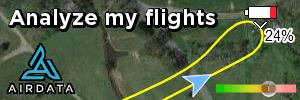Again and again there are posts about compass errors and the various replies that some seem a bit iffy ....
So manual page 41 ....
Calibrate compass in every NEW flight location.
Page 48 FAQ ....
A compass error may occur when the aircraft is flying close to strong magnetic sources (eg power lines and radio base stations). The aircraft status indicators will blink red and yellow rapidly when a compass error occurs and the DJI Go app will display one of the following messages :
* Compass error, calibration required.
This warning message indicates the aircraft is receiving abnormal compass readings. It is reccomended that you land the aircraft and recalibrate the compass at a DIFFERENT LOCATION. Resume flight in a DIFFERENT LOCATION if possible.
* Compass error, exiting P-GPS Mode.
This warning message indicates that the aircraft is drifting severely. Bring the aircraft to a higher altitude to acquire connections with enough GPS satellites when this warning message appears. The flight controller will automatically adjust the heading of the aircraft to mitigate the drifts. The aircraft will switch back to P-GPS Mode when these adjustments are complete.
........... let's look at this question.
First compass principles.
Magnetic compass points to magnetic north. Which lies in NW Alaska. Depending on position on earths surface, you will have a number of degrees correction to make to arrive at True North. This is called Variation. The location of magnetic pole is moving and the Variation has an annual correction to be applied. A navigation chart gives both figures.
Next we have error created by installation, eg on a boat - you may have engine, various steel objects etc, fixed and causing deflection of the needle. This is Deviation. It is a relatively constant figure as long as nothing changes on board. User 'swings' the boat through headings checking bearings of known point and difference to true. Correcting for Variation - he then knows the Deviation on each heading.
Variation and deviation for the aircraft are not your worry as calibration will adjust them for you.
Last we have Anomalies - these are due to local effects which can be iron ore deposits, pipes, cables, anything literally in vicinity that causes local disturbance of the compass. It can be over a large or small area. An example for a boat could be passing over a wrecked ship .... or a subsea cable.
OK now the base has been set. You can now understand that just because you are standing out in a big field does not mean you are completely clear of anomalies. What about that pipeline buried under you carrying oil to that refinery 500 miles away ? Or the power lines to that town on the horizon ?
What can we do ? My solution is a Marching or Orienteering compass.
Choose location and remove metal objects from your person ... step well away from car ... align compass with a distant object as reference.
Now walk around your intended area and see if needle deviates as you walk around, keeping that distant object as the reference. It will show you anomalies ... it may be that your initial point that you thought was good is the problem. What you look for is the largest area that has same stable indication.
OK - let's say you have a location that has an anomaly. Consider that when aircraft is close to ground - it will have greatest effect. So you mistakenly recalibrate. You take off ... as you ascend / move away - that effect reduces and then aircraft declares error.
Therefore think carefully before upsetting that good calibration you did last week. You just may be in bad location today.
Only recalibrate when you are at significant distance from your usual flying area ... to me that is a distance of hundred miles or more !
Don't panic when things appear bad. Try to stay calm .... quite often just easy stick movements will give you enough control to bring it back.
But first and most important to all you new owners - download the manual .... READ IT THROUGH MORE THAN ONCE. Don't fly till you know what controls are.
Hope the above helps and I wish the greatest success in the air ...
Nigel
So manual page 41 ....
Calibrate compass in every NEW flight location.
Page 48 FAQ ....
A compass error may occur when the aircraft is flying close to strong magnetic sources (eg power lines and radio base stations). The aircraft status indicators will blink red and yellow rapidly when a compass error occurs and the DJI Go app will display one of the following messages :
* Compass error, calibration required.
This warning message indicates the aircraft is receiving abnormal compass readings. It is reccomended that you land the aircraft and recalibrate the compass at a DIFFERENT LOCATION. Resume flight in a DIFFERENT LOCATION if possible.
* Compass error, exiting P-GPS Mode.
This warning message indicates that the aircraft is drifting severely. Bring the aircraft to a higher altitude to acquire connections with enough GPS satellites when this warning message appears. The flight controller will automatically adjust the heading of the aircraft to mitigate the drifts. The aircraft will switch back to P-GPS Mode when these adjustments are complete.
........... let's look at this question.
First compass principles.
Magnetic compass points to magnetic north. Which lies in NW Alaska. Depending on position on earths surface, you will have a number of degrees correction to make to arrive at True North. This is called Variation. The location of magnetic pole is moving and the Variation has an annual correction to be applied. A navigation chart gives both figures.
Next we have error created by installation, eg on a boat - you may have engine, various steel objects etc, fixed and causing deflection of the needle. This is Deviation. It is a relatively constant figure as long as nothing changes on board. User 'swings' the boat through headings checking bearings of known point and difference to true. Correcting for Variation - he then knows the Deviation on each heading.
Variation and deviation for the aircraft are not your worry as calibration will adjust them for you.
Last we have Anomalies - these are due to local effects which can be iron ore deposits, pipes, cables, anything literally in vicinity that causes local disturbance of the compass. It can be over a large or small area. An example for a boat could be passing over a wrecked ship .... or a subsea cable.
OK now the base has been set. You can now understand that just because you are standing out in a big field does not mean you are completely clear of anomalies. What about that pipeline buried under you carrying oil to that refinery 500 miles away ? Or the power lines to that town on the horizon ?
What can we do ? My solution is a Marching or Orienteering compass.
Choose location and remove metal objects from your person ... step well away from car ... align compass with a distant object as reference.
Now walk around your intended area and see if needle deviates as you walk around, keeping that distant object as the reference. It will show you anomalies ... it may be that your initial point that you thought was good is the problem. What you look for is the largest area that has same stable indication.
OK - let's say you have a location that has an anomaly. Consider that when aircraft is close to ground - it will have greatest effect. So you mistakenly recalibrate. You take off ... as you ascend / move away - that effect reduces and then aircraft declares error.
Therefore think carefully before upsetting that good calibration you did last week. You just may be in bad location today.
Only recalibrate when you are at significant distance from your usual flying area ... to me that is a distance of hundred miles or more !
Don't panic when things appear bad. Try to stay calm .... quite often just easy stick movements will give you enough control to bring it back.
But first and most important to all you new owners - download the manual .... READ IT THROUGH MORE THAN ONCE. Don't fly till you know what controls are.
Hope the above helps and I wish the greatest success in the air ...
Nigel
Last edited:





